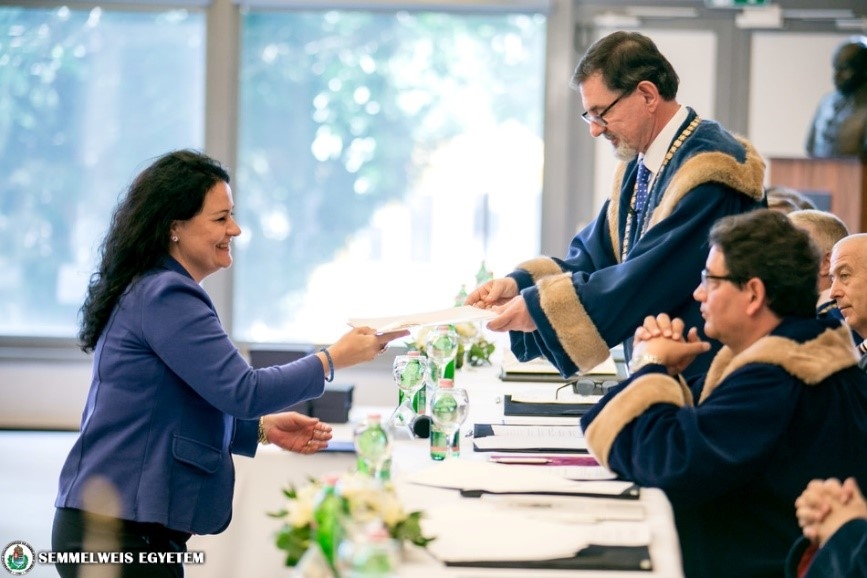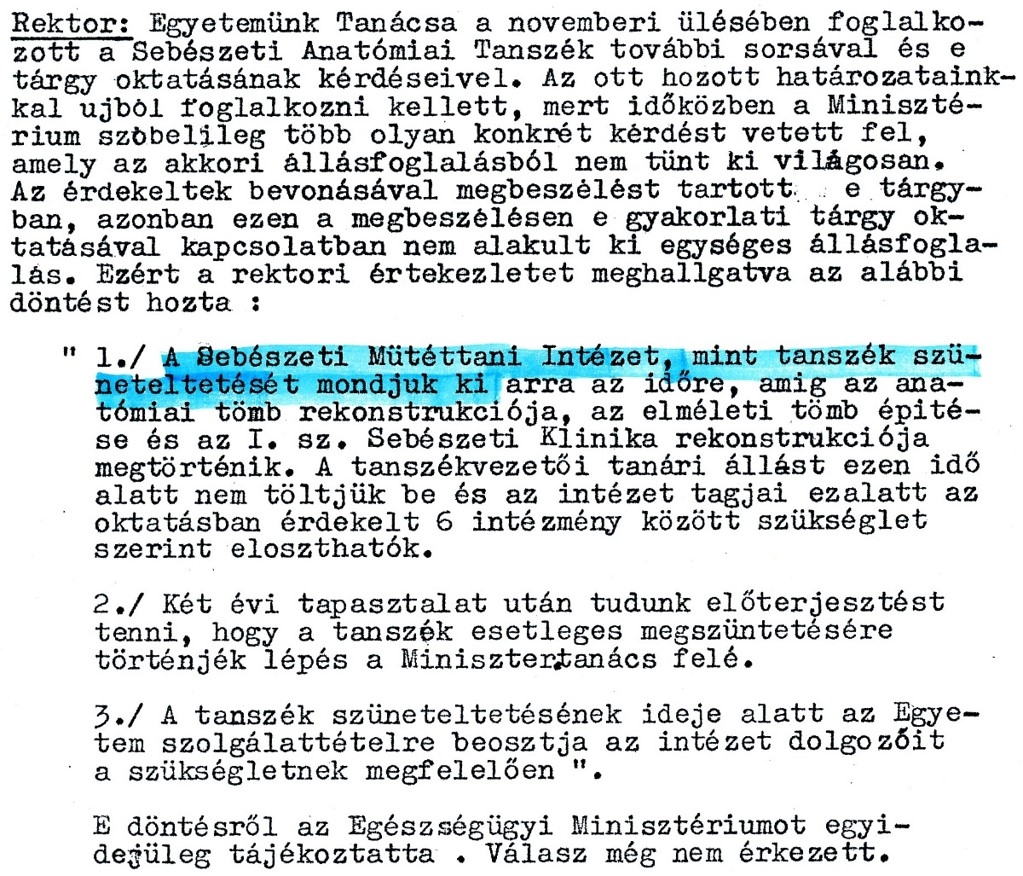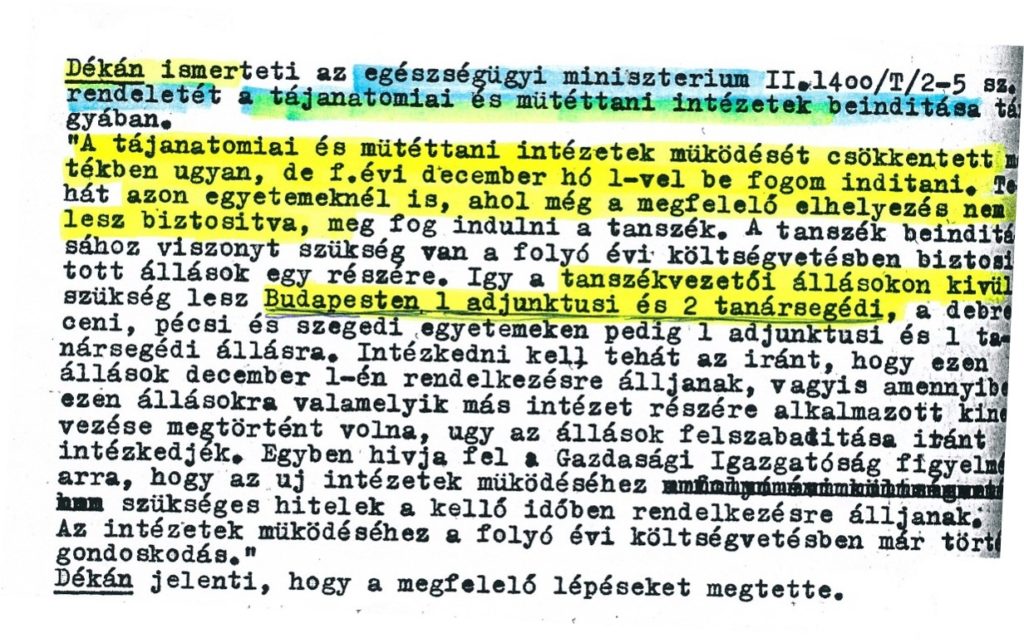From 2018
From 2018
Since November 2018, the department director is Dr. Andrea Ferencz, associate professor. Since the 1st of July 2020, the department Is under the supervision of the Városmajor Cardiovascular Medicine Centre while continuing to perform surgical research and provides surgical education.

2010-2018
2010-2018
From 1 July 2010 to 4 November 2018, the head of the institute was Prof. Dr. György Wéber.
“After a break of almost half a century, in 2010 the Institute of Surgical Reserch and Techniques started operating again at our university. While the Cold War and political will in the 1950s, the spectacular development of surgery today is the result of the works of surgical institutes. During the completion of our courses, the student himself / herself experiences the skills compared to his / her peers and this can decisively determine the direction of his / her further professional development. Our duty is to indicate to students that their dexterity predestines their manual or rather theoretical work. This is the mission of our institute! ” was written on the website.
In 2006, the Hungarian Accreditation Committee (HAC) reviewed the four medical training and made recommendations in its accreditation examination report (HAC Decision No. 2006/2 / II / 1/1). In 2009, the Senate of Semmelweis University passed a decision to reinstate the institute. The university’s 2010 accreditation report (HAC decision No. 2010/10 / VIII / 1) states: The Semmelweis University’s infrastructure is lacking some clinics / departments / specialties (surgical techniques,…), the existence of which is primarily important for general medical training, but for other specialized trainings as well. The university council recognizes that while aiming to solve older issues, it created or intends to create the departmental structures required for a modern training in these areas as well. “These considerations justified the reestablishment of the suspended Budapest Institute, which took place on July 1, 2010, when the then Rector of Semmelweis University, Professor Dr. Tivadar Tulassay, appointed Dr. György Wéber, Professor, to head the Institute of Experimental and Surgical Surgery.

Part of the institute was established in the Nagyvarad square Theoretical Science Centre. Its official opening was on January 21, 2011 in the NET Ballroom. A report on an event that is a milestone in the history of Hungarian surgical institutes was published in the journal Hungarian Surgery (Magy Seb 2011; 64 (3): 137-148).
A secretariat and medical rooms have been set up on the 11th floor of the NET. Later, the modern Teaching Operating Room was completed in the basement, which, together with the previously established laparoscopic practice room, provides a suitable venue for the practical education of the students ever since. Since 2012, the operating room using a live “large animal” has been housed at the NAIK Animal Husbandry and Feeding Research Institute in Herceghalom.
Professor József Sándor work was paramount to the restart of the institute, raising financial resources and in recruiting the staff. In the first semester, we were able to rely mainly on external staff. The young staff of the Surgery Department of Szent István Hospital, with growing clinical experience, enthusiastically participated in the practical training.
The Institute revived with struggles and tribulations. We would like to thank the rectors Tivadar Tulassay and Ágoston Szél, as well as the deans István Karády and László Hunyady for their support in restarting the institute.
1966-2010
1966-2010
In May 1965, Prof. Dr. Dénes Nagy did not return from his study trip to West Germany, and on 30 June 1966 the University Council decided to “suspend” the Institute indefinitely, while the stating to re-examine the issue two years and the staff of the Institute distribute as needed throughout the university.

Meanwhile, in addition to the educational tasks taking place in partner institutes of three rural universities, the institute underwent extensive surgical technique and general surgical technological developments while large-scale infrastructural investments were made. Additionally, translational research regarding operative conditions was initiated. These institutes are 70 years old today.
1951-1966
The institute of Surgical Research and Techniques was established in 1951 at the same time in all four medical universities of the country on the basis of the Resolution of the Ministry of Health (II.1400 / T / 2-5). The central government’s aspiration was that during the Cold War, in preparation for the III. by World War II, all graduate physicians must be able to suture wounds, be proficient in wound care, and possess basic surgical skills. The operation of the Institute is governed by 1951/52. academic year II. Prof. Dr. Dénes Nagy was appointed head of the department on March 11, 1953.


The name of the institute at that time was the Institute of Surgical Anatomy and Surgery and it was located on the left wing of the building of the Institute of Anatomy, on the first floor. During this period he performed exclusively educational tasks, the university’s MSc and FOK faculties IV. year-old students were educated, surgeries were performed on cadres and mixed dogs.

Concurrently, the surgical training of the doctors of the institute and the clinical training of the instructors in a rotating system in the II. Surgery Clinic (Baross Street) was also proceeding. Materials for the theoretical teaching of surgery were collected in a book, which was commissioned by the Ministry of Health, written by Professor Imre Littmann. Published in 1953, the book comprised of comprehensive chapters on basic prophylactic knowledge of surgical propaedeutics and the operative techniques of the most important surgical procedures.